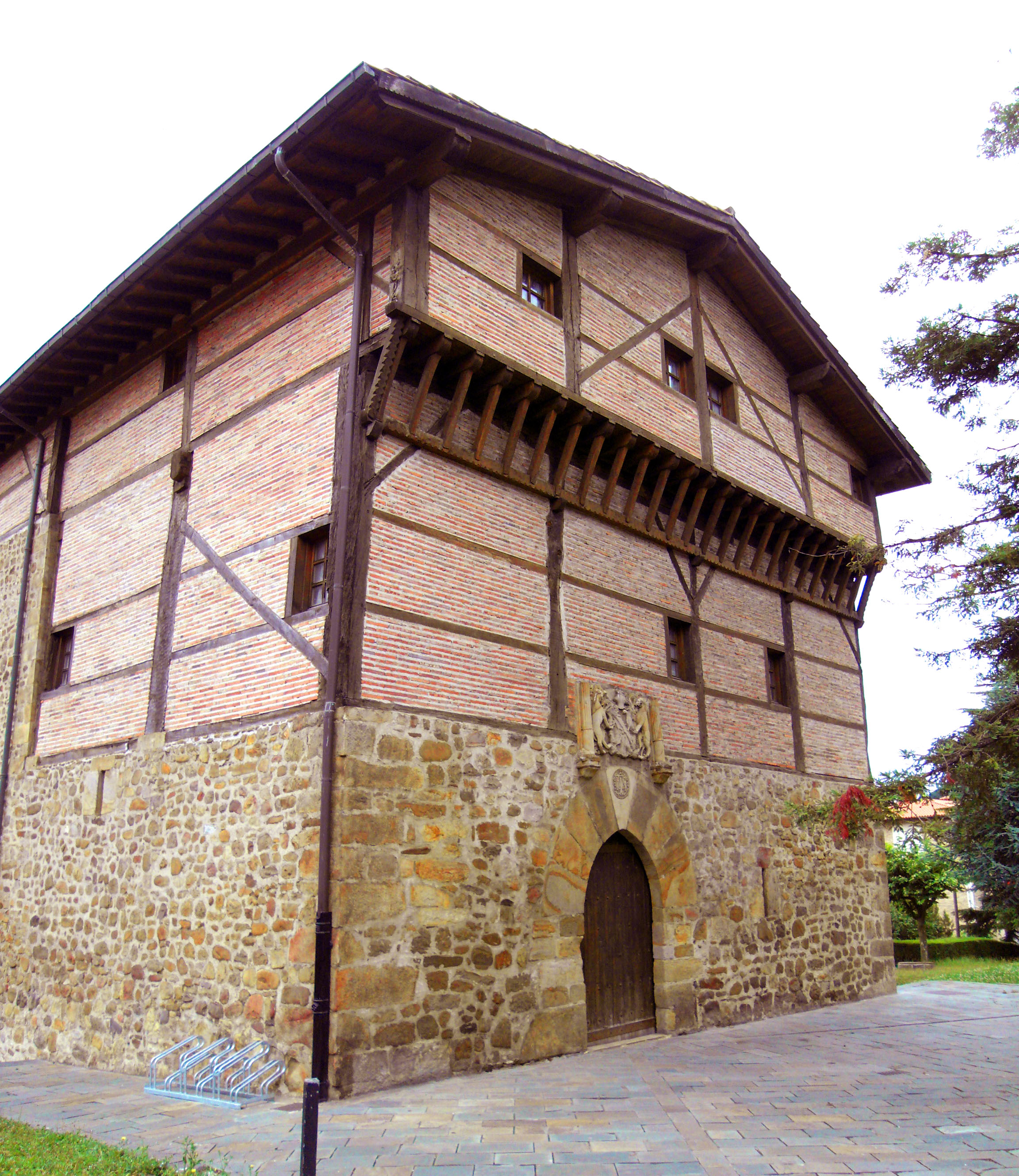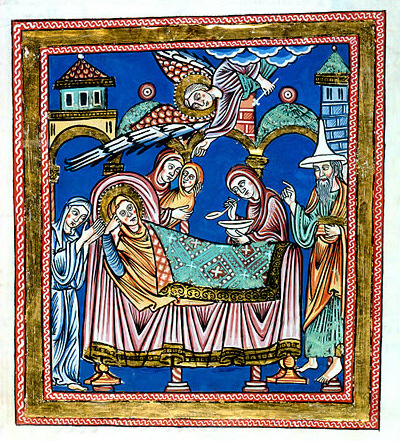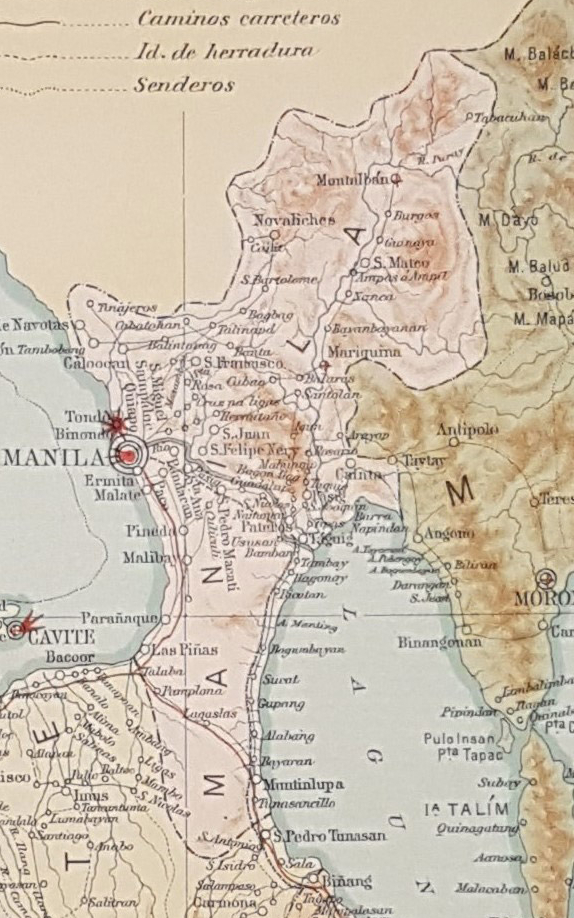|
Taguig Church
The Saint Anne Parish Church, also known as Santa Ana Church or also known in its formal name as the Minor Basilica and Archdiocesan Shrine of St. Anne, is a Catholic church and minor basilica located in Barangay Santa Ana, Taguig. It is situated next to the Taguig River and across Plaza Quezon, where the statue of Manuel L. Quezon was erected when he was still serving as President of the Philippines. Saint Anne is the patroness of the church. History Building of the church In 1571, the Spaniards subjugated mainland Luzon including Taguig through the Legazpi expedition. Between the years 1582 and 1583, Taguig became part of the Encomienda del Tondo and was under the headship of an Alcalde Mayor, Captain Vergara. Taguig was eventually established as a separate town in 1587 and was declared a parish with St. Anne as its chosen patroness. Augustinian friars, Diego Alvarez and his assistant, Diego de Avila, were assigned to begin religious activities in Taguig. The first ... [...More Info...] [...Related Items...] OR: [Wikipedia] [Google] [Baidu] |
Santa Ana, Taguig
Santa Ana is one of the 28 barangays of Taguig, Metro Manila, Philippines. It is located in the north eastern part of the city and is bounded by the barangays of Calzada and Palingon on the north, the Bambang and Wawa on the south and the barangays of Tuktukan and Ususan on the west, and Laguna de Bay on the southeast. It was the old municipal center of Taguig from its establishment in 1587 during the Spanish colonization of the Philippines. Saint Anne is the patroness of the barangay. Landmarks The Archdiocesan Shrine of St. Anne is a Roman Catholic church located in the barangay. Built in 1587, it is situated next to the Taguig River and across Plaza Quezon, where the statue of Manuel L. Quezon Manuel Luis Quezon y Molina, (; 19 August 1878 – 1 August 1944), also known by his initials MLQ, was a Filipino people, Filipino lawyer, statesman, soldier and politician who served as president of the Commonwealth of the Philippines from 1 ... was erected when he was still serv ... [...More Info...] [...Related Items...] OR: [Wikipedia] [Google] [Baidu] |
Miguel López De Legazpi
Miguel López de Legazpi (12 June 1502 – 20 August 1572), also known as ''Adelantado, El Adelantado'' and ''El Viejo'' (The Elder), was a Spaniard who, from the age of 26, lived and built a career in Mexico (then the Viceroyalty of New Spain) and, in his 60s, financed and led a colonizing expedition from Mexico to the Philippines, Philippine islands. He was joined by his Mexican grandsons, Juan de Salcedo and his brother Felipe de Salcedo, Felipe, on the expedition. Legazpi established the first Spanish settlement in the East Indies when his expedition crossed the Pacific Ocean from the New Spain, arriving in Cebu in the modern Philippine Islands in 1565. He was the first Governor-General of the Philippines, Governor-General of the Spanish East Indies, which was administered from Mexico City for the Spanish crown. It also encompassed other Pacific islands, namely Guam, the Mariana Islands, Marianas Islands, Palau, and the Caroline Islands, Carolinas. After obtaining peace w ... [...More Info...] [...Related Items...] OR: [Wikipedia] [Google] [Baidu] |
Quinquagesima
Quinquagesima (), in the Western Christian Churches, is the last Sunday of Shrovetide, being the Sunday before Ash Wednesday. It is also called Quinquagesima Sunday, Quinquagesimae, Estomihi, Shrove Sunday, Pork Sunday, or the Sunday next before Lent. Quinquagesima Sunday, being the Lord's Day prior to the start of the Lenten season, is known for its meat consumption as people wished to feast before starting their fast on Ash Wednesday, the first day of Lent. Historically Lutheran countries such as Denmark mark Quinquagesima Sunday as the peak of the Fastelavn. After attending the Divine Service (Lutheran), Divine Service on Shrove Sunday, congregants enjoy Shrovetide buns (fastelavnsboller). Children often dress up and collect money from people while singing. Christians in these nations carry Shrovetide rods (fastelavnsris), which "branches decorated with sweets, little presents, etc., that are used to decorate the home or give to children." In the Revised Common Lectionary the ... [...More Info...] [...Related Items...] OR: [Wikipedia] [Google] [Baidu] |
Joachim
Joachim (; ''Yəhōyāqīm'', "he whom Yahweh has set up"; ; ) was, according to Christian tradition, the husband of Saint Anne and the father of Mary, the mother of Jesus. The story of Joachim and Anne first appears in the Biblical apocryphal Gospel of James. His feast day is 26 July, a date shared with Saint Anne. In Christian tradition The story of Joachim, his wife Anne (or Anna), and the miraculous birth of their child Mary, the mother of Jesus, was told for the first time in the 2nd-century apocryphal infancy-gospel the Gospel of James (also called Protoevangelium of James). Joachim was a rich and pious man, who regularly gave to the poor. However, Charles Souvay, writing in the ''Catholic Encyclopedia'', says that the idea that Joachim possessed large herds and flocks is doubtful. At the temple, Joachim's sacrifice was rejected, as the couple's childlessness was interpreted as a sign of divine displeasure. Joachim consequently withdrew to the desert, where he fasted and ... [...More Info...] [...Related Items...] OR: [Wikipedia] [Google] [Baidu] |
Basilicas In The Catholic Church
In the Catholic Church, a basilica is a designation given by the Pope to a church building. Basilicas are distinguished for ceremonial purposes from other churches. The building need not be a basilica in the architectural sense (a rectangular building with a central nave flanked by two or more longitudinal aisles). Basilicas are either major basilicas – of which there are four, all in the Diocese of Rome – or minor basilicas, of which there were 1,810 worldwide . Numerous basilicas are notable shrines, often even receiving significant pilgrimages, especially among the many that were built above a ''confessio'' or the burial place of a martyr – although this term now usually designates a space before the high altar that is sunk lower than the main floor level (as in the case in St Peter's and St John Lateran in Rome) and that offer more immediate access to the burial places below. Some Catholic basilicas are Catholic pilgrimage sites, receiving t ... [...More Info...] [...Related Items...] OR: [Wikipedia] [Google] [Baidu] |
Dicastery For Divine Worship And The Discipline Of The Sacraments
it, Dicastero per il Culto Divino e la Disciplina dei Sacramenti , type = Dicastery , seal = Coat of arms Holy See.svg , seal_size = 100px , seal_caption = Coat of arms of the Holy See , logo = , picture = Via della Conciliazione din Roma1.jpg , picture_caption = Palazzo delle Congregazioni in Piazza Pio XII (in front of St. Peter's Square) is the workplace for most congregations of the Roman Curia , parent_department = , website = http://www.cultodivino.va/ , agency_type = Dicastery , formed = (as a Congregation with the same name) , preceding1 = Sacred Congregation for Divine Worship(formed ) , preceding2 = Sacred Congregation for the Discipline of the Sacraments(formed ) , preceding3 = Sacred Congregation for Rites(formed ) , jurisdiction = , headquarters = Palazzo delle Congregazioni, Piazza Pio XII, Rome, Italy , employees = , budget = , chief1_ ... [...More Info...] [...Related Items...] OR: [Wikipedia] [Google] [Baidu] |
National Museum Of The Philippines
The National Museum of the Philippines ( fil, Pambansang Museo ng Pilipinas}) is an umbrella government organization that oversees a number of national museums in the Philippines including ethnographic, anthropological, archaeological, and visual arts collections. From 1973 until 2021, the National Museum served as the regulatory and enforcement agency of the government of the Philippines in the restoring and safeguarding of significant cultural properties, sites, and reservations throughout the Philippines. The mandate has since been transferred to the National Commission for Culture and the Arts. The National Museum operates the National Museum of Fine Arts, National Museum of Anthropology, and the National Museum of Natural History, all located in the National Museum Complex in Manila. The institution also operates branch museums throughout the country. The National Museum also established and operates regional museums across the Philippines: National Museum Eastern-Northe ... [...More Info...] [...Related Items...] OR: [Wikipedia] [Google] [Baidu] |
National Commission For Culture And The Arts (Philippines)
The National Commission for Culture and the Arts of the Philippines ( fil, Pambansang Komisyon para sa Kultura at mga Sining, ceb, Nasodnong Komisyon alang sa Budaya ug mga Arte) is the official government agency for culture in the Philippines. It is the overall policy making body, coordinating, and grants giving agency for the preservation, development and promotion of Philippine arts and culture; an executing agency for the policies it formulates; and task to administering the National Endowment Fund for Culture and the Arts (NEFCA) – fund exclusively for the implementation of culture and arts programs and projects. History The successful overthrow of the dictatorship in 1986 through the People Power Revolution inspired the different sectors of society to rally behind the new government towards the restoration of democracy. On March 12, 1986, the Alliance of Artists for the Creation of a Ministry of Culture (AACMC) drafted and adopted a proposal for the establishment of ... [...More Info...] [...Related Items...] OR: [Wikipedia] [Google] [Baidu] |
National Historical Commission Of The Philippines
The National Historical Commission of the Philippines ( fil, Pambansang Komisyong Pangkasaysayan ng Pilipinas, abbreviated NHCP) is a government agency of the Philippines. Its mission is "the promotion of Philippine history and cultural heritage through research, dissemination, conservation, sites management and heraldry works." As such, it "aims to inculcate awareness and appreciation of the noble deeds and ideals of our heroes and other illustrious Filipinos, to instill pride in the Filipino people and to rekindle the Filipino spirit through the lessons of history." History The present day NHCP was established in 1972 as part of the reorganization of government after President Ferdinand Marcos' declaration of martial law, but the roots of the institute can be traced back to 1933, when the American colonial Insular Government first established the Philippine Historical Research and Markers Committee (PHRMC). Philippine Historical Research and Markers Committee (1933) The P ... [...More Info...] [...Related Items...] OR: [Wikipedia] [Google] [Baidu] |
Rizal
Rizal, officially the Province of Rizal ( fil, Lalawigan ng Rizal), is a province in the Philippines located in the Calabarzon region in Luzon. Its capital is the city of Antipolo. It is about east of Manila. The province is named after José Rizal, one of the main national heroes of the Philippines. Rizal is bordered by Metro Manila to the west, Bulacan to the north, Quezon to the east and Laguna to the southeast. The province also lies on the northern shores of Laguna de Bay, the largest lake in the country. Rizal is a mountainous province perched on the western slopes of the southern portion of the Sierra Madre mountain range. Pasig served as its capital until 2008, even it became a part of the newly created National Capital Region since November 7, 1975. A provincial capitol has been in Antipolo since 2009, making it the administrative center. On June 19, 2020, President Rodrigo Duterte signed Republic Act No. 11475, which designated Antipolo as the capital of Rizal. The cha ... [...More Info...] [...Related Items...] OR: [Wikipedia] [Google] [Baidu] |
Empire Of Japan
The also known as the Japanese Empire or Imperial Japan, was a historical nation-state and great power that existed from the Meiji Restoration in 1868 until the enactment of the post-World War II 1947 constitution and subsequent formation of modern Japan. It encompassed the Japanese archipelago and several colonies, protectorates, mandates, and other territories. Under the slogans of and following the Boshin War and restoration of power to the Emperor from the Shogun, Japan underwent a period of industrialization and militarization, the Meiji Restoration, which is often regarded as the fastest modernisation of any country to date. All of these aspects contributed to Japan's emergence as a great power and the establishment of a colonial empire following the First Sino-Japanese War, the Boxer Rebellion, the Russo-Japanese War, and World War I. Economic and political turmoil in the 1920s, including the Great Depression, led to the rise of militarism, nat ... [...More Info...] [...Related Items...] OR: [Wikipedia] [Google] [Baidu] |



.jpg)


